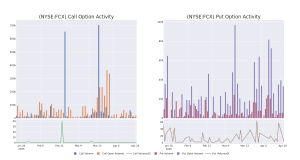
Succession planning is a priority in the utility industry as an aging workforce, changing technologies, and turnover reshape the sector. The utility sector faces unique challenges, striving for seamless transfers of institutional knowledge while recruiting young talent and preparing the next generation of leaders to navigate complexities and emerging trends.
Succession planning is defined as the strategic, ongoing assessment and development of pipelines for critical positions within an organization, conducted in a collaborative nature between the human resources (HR) department and management.
Succession planning should be a priority for executives across the energy value chain as it ensures organizations are prepared for the departure of key executives (whether it’s from retirement, promotion, or a new opportunity), ensuring skills and knowledge are transferred, and leadership voids are filled with qualified employees.
All roles in an organization are important, but when it comes to developing a strong succession plan, it is a priority to focus on the roles that are vital to operations and continuity. The best way to do this is to first focus on strategy by identifying internal and external factors that can shape future workforce needs. Consider the following:
-
How will the state of the industry affect operations for the next five to 10 years?
-
What operations are important to the future of the industry?
-
Which operations will grow, stay consistent, be downsized or discontinued?
-
Will any job functions be consolidated?
Once these questions are answered, conduct an organizational scan by gathering and analyzing data by department or division to pinpoint critical roles. This scan should identify which roles will be open due to retirement. Often, companies use their payroll or enterprise resource planning (ERP) systems to quickly identify potential retirement dates based on employee demographic data and any employment rules that govern when employees are eligible for retirement. Another priority during this scan is identifying which positions have high turnover rates. Internal conversations can help identify which positions are experiencing more resignations or terminations. After conducting the organizational scan, the team should analyze any additional factors that may impact succession planning. Think of roles that may have impacts on regulatory compliance and safety, or may require specialized skills. What would occur if this role were vacant? Could operations continue without major impact? The last step combines everything that has been learned throughout the process by creating a list of critical positions. When creating this list, start off slow by only including about 10% of the company’s total positions. From here, the organization can slowly build up its succession plan.

